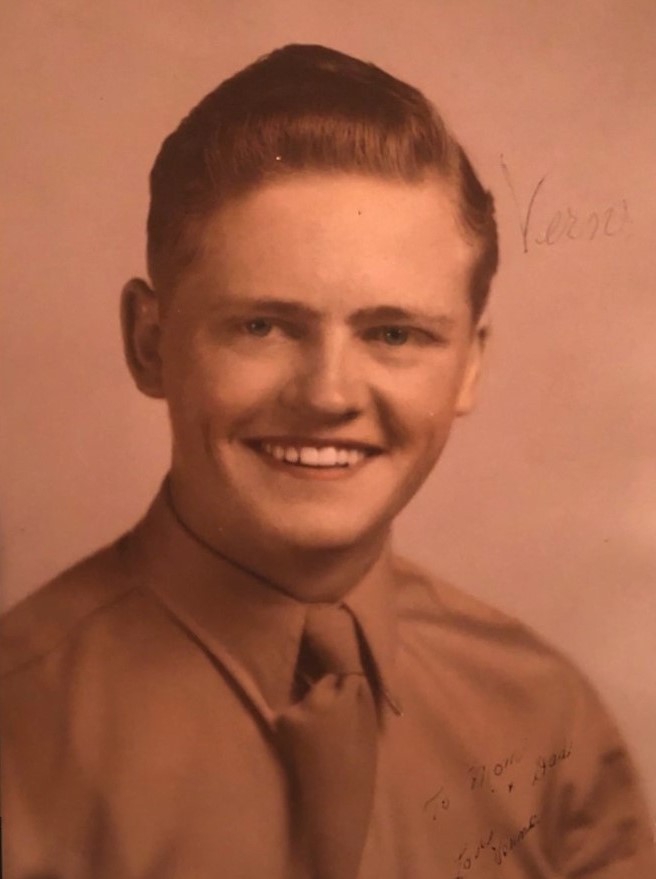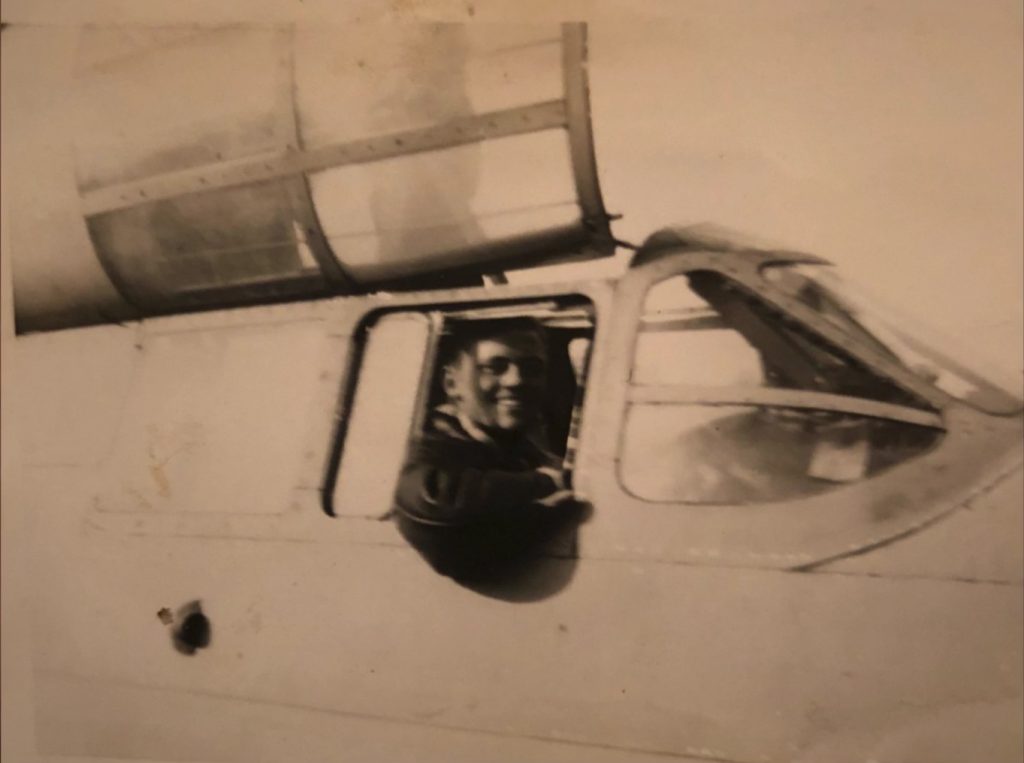Remains of WWII Airman Return Home to Western Pennsylvania After 74 Years
Monongahela, Pa.’s Vernon Hamilton identified through DNA after crash site in Germany found
By Matt Neistein
Published April 12, 2019
Read Time: 5 mins
Sgt. Vernon Hamilton never should have been on the plane.
A mechanic in the U.S. Army Air Corps during World War II, he manned some of the guns aboard a Douglas A-26B Invader while it conducted combat operations in Europe.
The handsome 19-year-old from little Monongahela, Pa., had just finished a mission on March 21, 1945 – less than two months before the end of the war – when a member of another flight crew in the 409th Bombardment Group got sick.
Hamilton, wanting to hit his quota of missions as quickly as possible so he could return home, volunteered to replace the ill soldier on a venture to bombard Nazi troops ahead of American infantrymen preparing to cross the Rhine River.
Hours later, anti-aircraft fire from a battery of 128mm guns struck Hamilton’s aircraft, which plummeted into the German countryside and, for all intents and purposes, vanished.

Monongahela, Pa.’s Vernon Hamilton served during WW II as a mechanic in the U.S. Army Air Corps. (Photo provided by the Atkins family)
MOMENTOUS DISCOVERY
For years, Hamilton’s mother Dorothy left the door to her home unlocked at all hours, expecting her Vernon to walk in at any time.
She wrote letters pleading with the U.S. Army to find her son, who she believed was alive but suffering from injuries that may have affected his memory of who he was. She requested that her son’s uniform be sent home so she could clean and press it for his return – he always liked looking sharp, she told family.
Dorothy even volunteered to join search parties the Army sent to look for the plane’s wreckage, search efforts that proved fruitless.
Shelley Atkins grew up listening to her grandmother tell stories about those letters and her missing Uncle Vernon, who dropped out of Monongahela High School at age 17 and enlisted on his 18th birthday. Now living in Lighthouse Point, Florida, with her husband Donn, Shelley got a surprise when she answered the phone recently.
“They called and said they had found my uncle’s remains,” she said.
In 2016, a German military historian who had spent years looking for the missing flight got word of a possible crash site in a field in Hülsten, Germany. A preliminary investigation turned up pieces of an aircraft.
History Flight Inc., a Florida-based nonprofit dedicated to repatriating the remains of U.S. servicemen and women who died in overseas combat, dispatched a team in November 2016 to excavate and document the site. They were under a tight deadline – the owner of the land where they needed to work was starting construction there in December. Wintry conditions didn’t help, either.
Undaunted, the team began digging, and within days they discovered evidence of a wrecked American light bomber in a 15-foot crater. Pieces of the aircraft, human remains and personal effects were all found – including a 10-karat gold ring issued by Monongahela High School.
Mark Noah, executive director of History Flight, was on the ground in Germany helping to excavate the site. He said the team found hundreds of pounds of aircraft fragments, the bomber’s machine guns, military identification tags, boots, fragments of leather jackets, a .45-caliber pistol and the pilot’s wings.
“There was a lot of material evidence of what they were carrying,” Noah said.

Hamilton’s 10-karat gold ring issued by Monongahela High School was recovered at the crash site in Germany. (Photo provided by the Atkins family)
A MYSTERY SOLVED
With the remains rescued from the wreckage, the long process of identifying them via DNA began. Samples were collected from surviving members of Hamilton’s family, including his younger sister Donna – who now lives in California and was only 6 when the plane crashed – and his nieces and nephew.
His older brother Jim, Shelley’s father, had already passed away.
In December 2018, the Defense POW/MIA Accounting Command officially identified Sgt. Vernon Hamilton’s remains, along with those of his crewmates, pilot 2nd Lt. Lynn Hadfield of Utah and navigator Sgt. John Kalausich of West Virginia.
“Once they knew it was Verne, (the military) could release all the records,” Donn said, noting that all the paperwork and photos documenting Hamilton’s service and the search for the downed aircraft generated a binder that is 3 inches thick.
“Everything that the military had in their archives,” said Shelley.
Among those documents were all the letters her grandmother wrote to the Army, to legislators, to clergy – anyone she thought would be able to help her find her son.
“It tore your heart out (to read them),” Donn said. “She never gave up.”
The couple lauded History Flight’s efforts to find Vernon Hamilton and the care the group took to keep the family informed.
“They are so committed to finding fallen soldiers,” Donn said.
HERO’S WELCOME
On Thursday, April 11, Hamilton finally returned home to Western Pennsylvania. His family anxiously awaited planeside at Pittsburgh International Airport as a military honor guard unloaded the flag-draped casket from a Southwest plane into a hearse driven to Frye Funeral Home in his hometown.
“My uncle’s been gone 74 years,” said Shelley. “It’s unbelievable this is even happening. It’s like a celebration. We’re so excited.”
On Saturday, April 13, funeral services will be held at First Presbyterian Church, not far from Hamilton’s childhood home on Main Street, where a banner with his photo, honoring his sacrifice, now hangs. Afterward, a procession will take him through the town, where residents are expected to stand and salute, Donn Atkins said.
“It’s a very emotional thing for everybody, even if it’s not your family,” Shelley said.
A ceremony with full military honors will be held at Monongahela Cemetery, where Hamilton will be buried by his mother, who died at age 84 in 1992, never truly knowing her son’s fate.
“My grandmother always said he was going to come home,” said Shelley Atkins. “I guess she was right.”
Managing Editor Bob Kerlik contributed to this report.
Powered by flickr embed.







